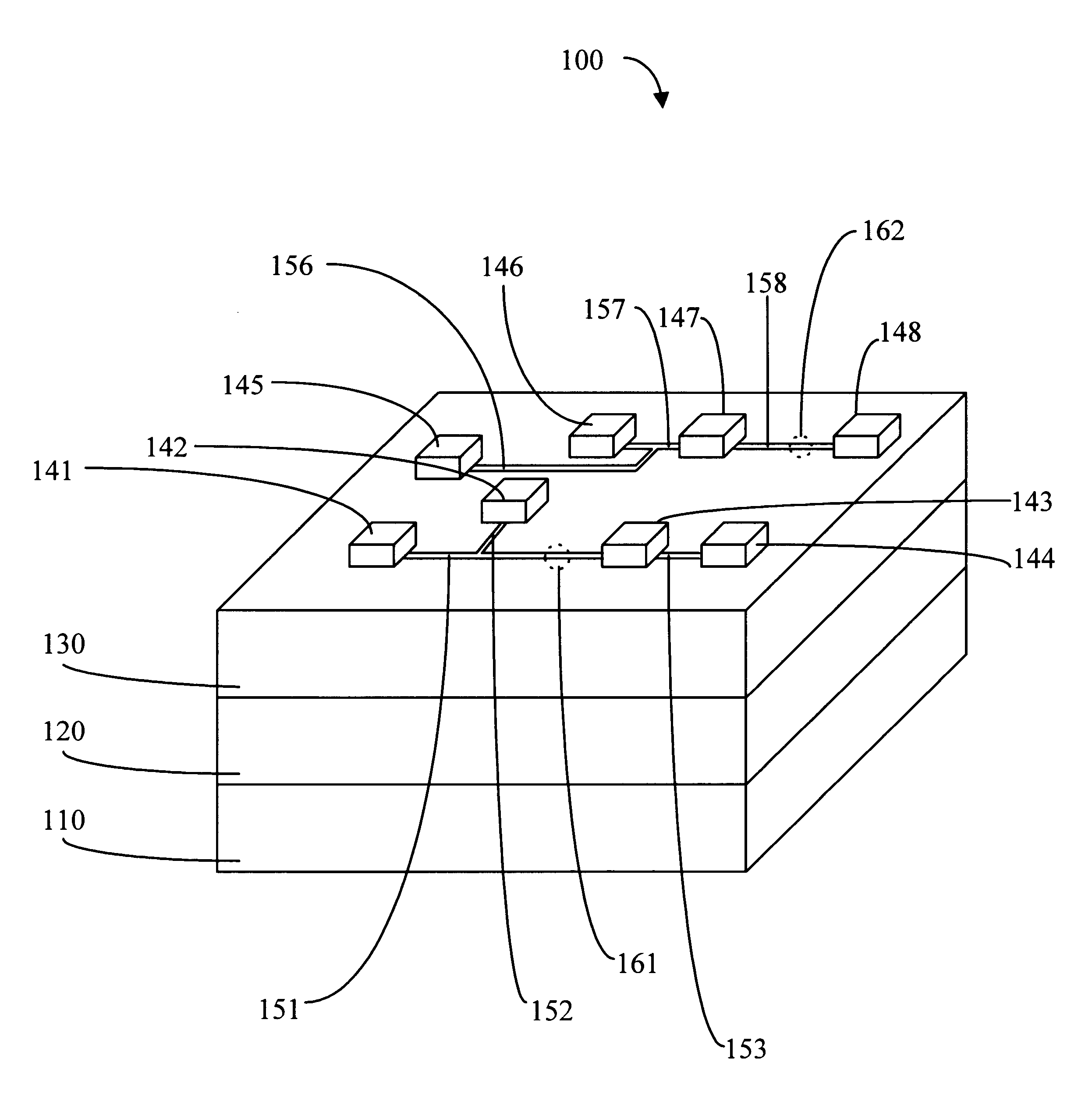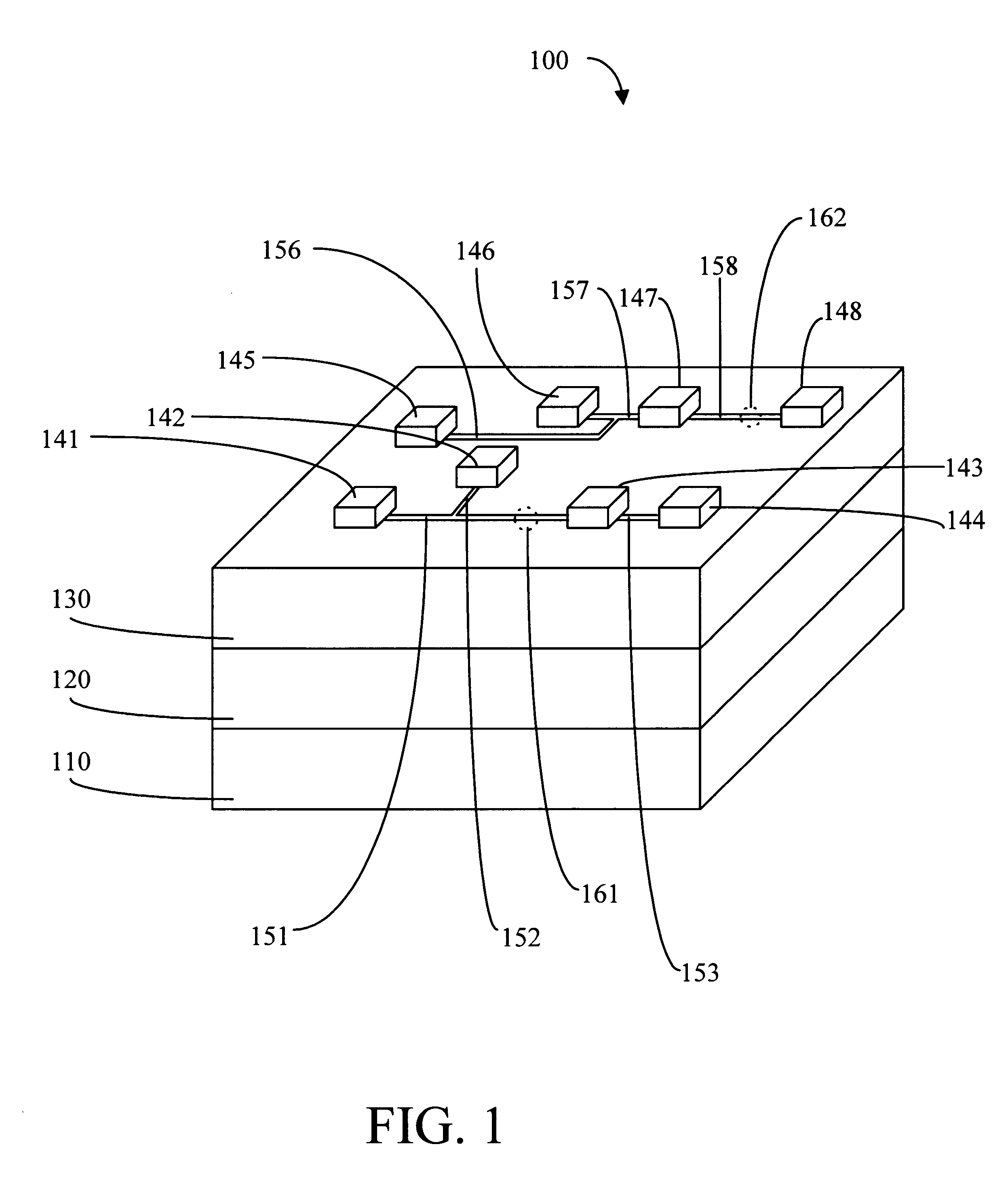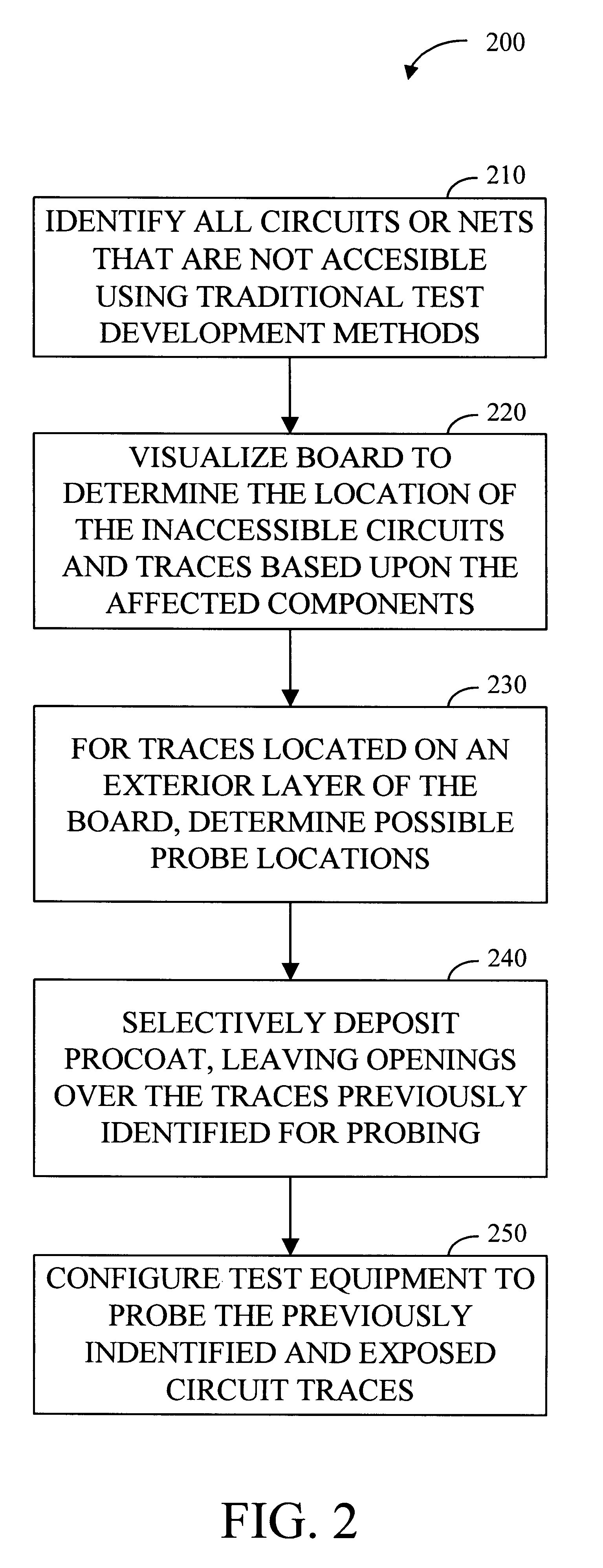Circuit trace probe and method
a circuit trace and probe technology, applied in the field of circuit trace probes, can solve the problems of affecting the accuracy and completeness of the test, and not always being possible to do
- Summary
- Abstract
- Description
- Claims
- Application Information
AI Technical Summary
Problems solved by technology
Method used
Image
Examples
Embodiment Construction
Creating Test Points
The present invention overcomes the obstacle of having too few traditional test points on a designed board by establishing openings or access points in the procoat to allow circuit traces or points on the circuit traces to be used as new, additional test points for testing PCBs. In addition, the present invention teaches the use of a specially designed test probe to contact the new test points. The invention may be used after the functional design of a circuit board has been completed but before large scale fabrication has begun and may also be used for reliability testing and / or troubleshooting of finished printed circuit boards.
Referring now to FIG. 2, a method 200 for creating new test points is explained. First, the test engineer identifies or determines which circuits or nets on a PCB are untestable using the traditional testing procedures and test points which were established during the design phase for the PCB (step 210). The engineer will also note which...
PUM
 Login to View More
Login to View More Abstract
Description
Claims
Application Information
 Login to View More
Login to View More - R&D
- Intellectual Property
- Life Sciences
- Materials
- Tech Scout
- Unparalleled Data Quality
- Higher Quality Content
- 60% Fewer Hallucinations
Browse by: Latest US Patents, China's latest patents, Technical Efficacy Thesaurus, Application Domain, Technology Topic, Popular Technical Reports.
© 2025 PatSnap. All rights reserved.Legal|Privacy policy|Modern Slavery Act Transparency Statement|Sitemap|About US| Contact US: help@patsnap.com



